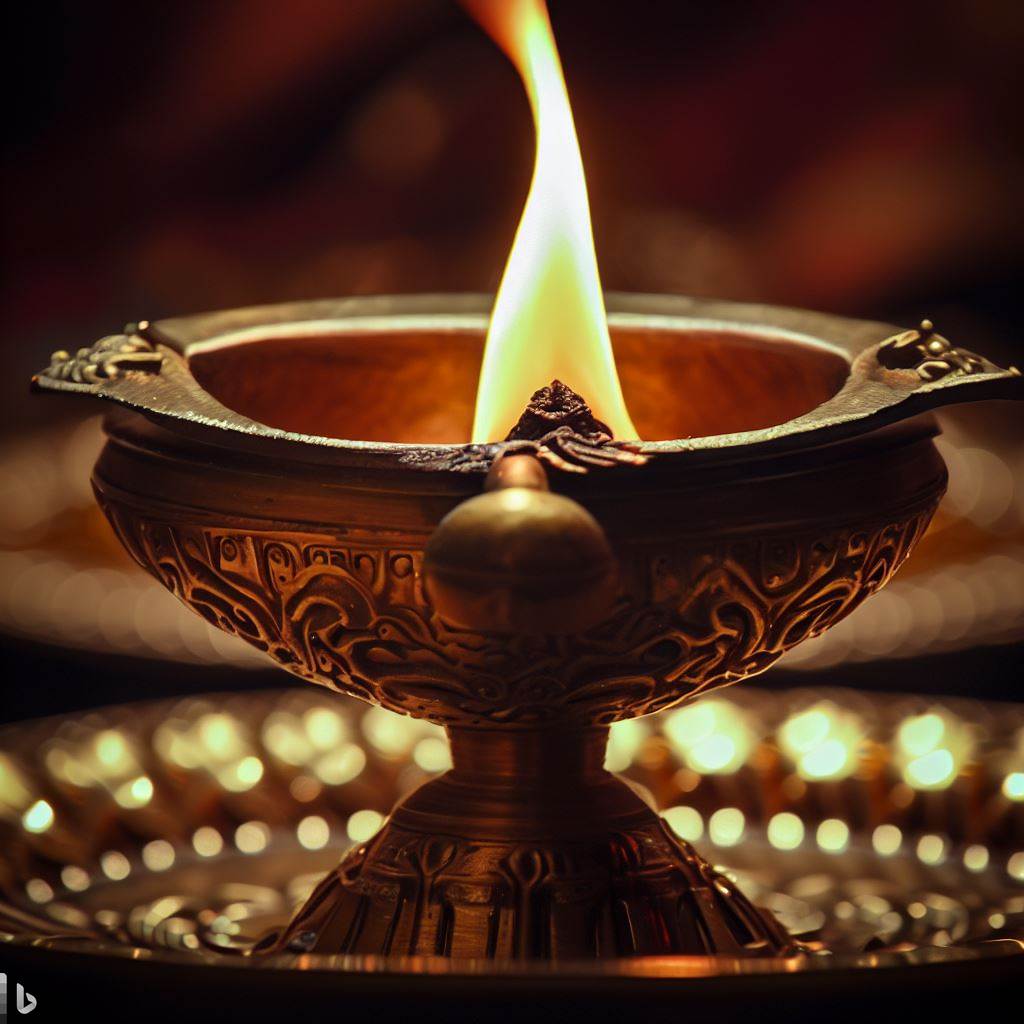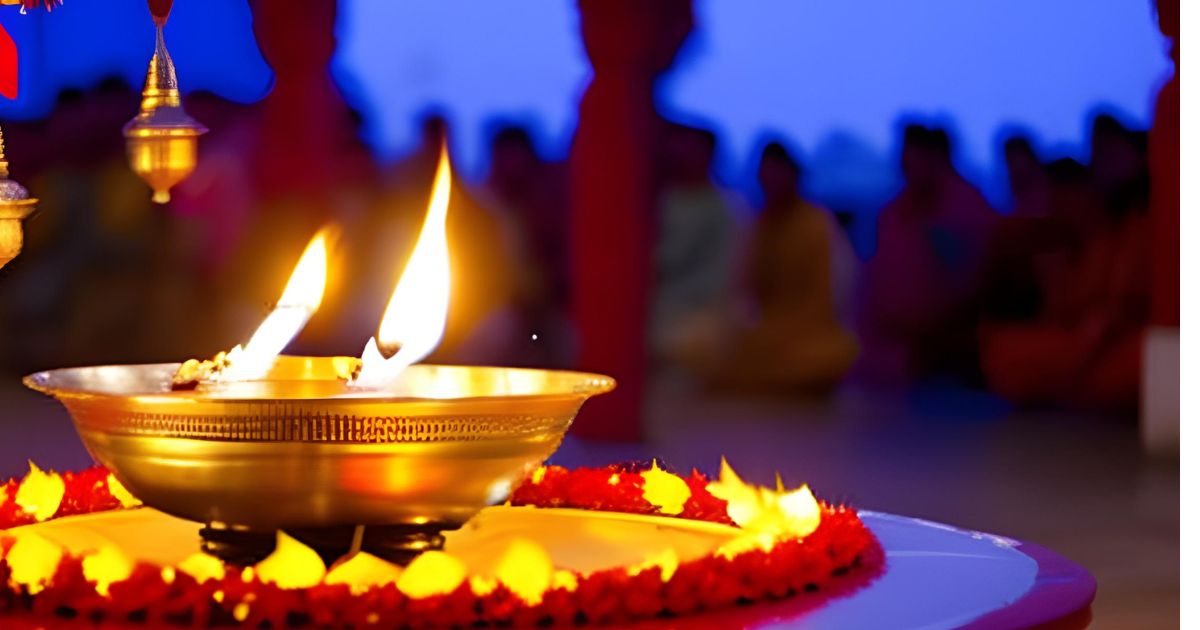Discover the sacred ritual of Aarti, an expression of love and devotion in Hindu culture. Unveil its spiritual essence.
Introduction
Aarti, a beautiful and sacred ritual in Hinduism, holds immense significance as an expression of devotion and love towards the divine. This article explores the various facets of Aarti, delving into its origins, rituals, symbolism, and impact on individuals and communities. Beyond religious boundaries, Aarti has found its place in modern times, adapting to the changing world while preserving its essence. Let us embark on this spiritual journey and understand why Aarti remains a cherished tradition in the hearts of millions worldwide.
What is Aarti in Hinduism?
Aarti is a traditional Hindu ritual performed to honor and offer reverence to deities, saints, or even guests, by displaying light before them. Derived from the Sanskrit word "Aratrika," Aarti involves the use of a small lamp, accompanied by incense and other offerings. This act of worship is an ancient practice deeply rooted in Hindu culture and spirituality.
The Rituals of Aarti
3.1 Preparing for Aarti
Before commencing the Aarti, devotees prepare themselves and the space for the sacred ritual. They cleanse themselves through a bath or by washing their hands and feet. The place of worship is tidied, adorned with flowers, and decorated with vibrant colors.
3.2 Performing Aarti
As the evening approaches and darkness falls, the Aarti ceremony begins. The lamp, typically made of clay or metal, is filled with oil or ghee. A cotton wick is placed in the lamp and lit, signifying the illumination of the divine light.
3.3 Symbolism in Aarti
Aarti holds profound symbolism. The lamp represents the illumination of wisdom and knowledge that dispels darkness—the darkness of ignorance and the light of consciousness. The clockwise circular movement of the Aarti lamp symbolizes the cyclical nature of life and the eternal cosmic rhythm.
Significance of Aarti

4.1 Expressing Devotion and Love
Aarti is an emotional expression of love, adoration, and surrender to the divine. It allows devotees to connect with their chosen deities on a profound level, reinforcing their faith and devotion.
4.2 Creating a Spiritual Connection
The act of performing Aarti fosters a direct spiritual connection between the worshiper and the divine. It is believed that during Aarti, the deities descend to accept the offerings and bless their devotees.
4.3 Warding off Evil and Negativity
Aarti is also believed to purify the environment and dispel negative energies. The fragrant incense and the rhythmic ringing of bells are thought to drive away malevolent forces and bring positivity.
4.4 Fostering a Sense of Unity
Aarti is often a collective activity, bringing together people from various walks of life. This fosters a sense of unity, breaking down barriers of caste, creed, and social status.
Aarti in Different Hindu Traditions
5.1 Aarti in the Temples
In Hindu temples, Aarti is a regular feature and is performed multiple times a day. It is a grand spectacle with an elaborate display of lights, music, and chanting.
5.2 Aarti in Home Shrines
At home, families perform Aarti during their daily prayers or on special occasions. It is an intimate affair filled with love and devotion.
5.3 Festivals and Aarti
During festivals, Aarti takes center stage. Festive Aartis are vibrant and joyous, celebrating the divine in all its glory.
Aarti and its Musical Components
6.1 The Music of Aarti
Aarti is accompanied by soul-stirring music that enhances the devotional experience. The melodious bhajans and chants create an ambiance of reverence and spirituality.
6.2 Instruments Used in Aarti
Traditional musical instruments like the harmonium, tabla, and cymbals are often used during Aarti, adding a cultural touch to the ritual.
The Evolution of Aarti
7.1 Historical Roots of Aarti
The roots of Aarti can be traced back to ancient Vedic rituals and have evolved over thousands of years.
7.2 Changes Over Time
As Hinduism developed and spread, different regions adapted Aarti to suit their cultural and artistic sensibilities.
Aarti Beyond Religion
8.1 Aarti in Yoga and Meditation
Beyond religious contexts, Aarti has found its place in yoga and meditation practices, providing a meditative experience to seekers.
8.2 Aarti in Social Gatherings
In social gatherings, Aarti acts as a unifying force, promoting a sense of community and togetherness.
8.3 Aarti in Cultural Events
Aarti is not confined to religious events; it also holds a significant presence in various cultural festivals and gatherings.
The Global Influence of Aarti
9.1 Aarti in the Diaspora
As Hindu communities have spread across the globe, the tradition of Aarti has traveled with them, maintaining its cultural significance and helping preserve their identity.
9.2 Cultural Exchange and Aarti
Aarti has also played a role in cultural exchange, as people from different backgrounds and beliefs have been drawn to its beauty and spiritual essence.
The Role of Aarti in Daily Life
10.1 Aarti as a Spiritual Practice
For devout Hindus, performing Aarti is not merely a ritual; it becomes a spiritual practice that brings them closer to their inner selves and the divine.
10.2 Aarti as a Source of Inner Peace
The serene and meditative nature of Aarti provides individuals with a sense of tranquility and inner peace, calming their minds and soothing their souls.
Misconceptions About Aarti
11.1 Aarti vs. Idol Worship
A common misconception is that Aarti is synonymous with idol worship, but it is, in fact, an act of reverence and gratitude towards the divine presence represented by the idol.
11.2 Aarti and Fire Rituals
Aarti is often mistaken for a fire ritual, but its essence lies in the symbolic gesture of offering light and devotion, not in fire-worship.
Modern Adaptations of Aarti
12.1 Aarti in the Digital Age
With technological advancements, Aarti has found a place in the digital world, with virtual Aarti ceremonies connecting devotees globally.
12.2 Aarti in Virtual Settings
During times of restricted gatherings, virtual Aarti has become a way for individuals to participate in the ritual from the comfort of their homes.
Criticism and Controversy
13.1 Commercialization of Aarti
Some critics argue that the commercialization of Aarti in certain places has diluted its spiritual significance, turning it into a spectacle for tourism.
13.2 Gender Roles and Aarti
There have been discussions about gender roles in Aarti, with efforts being made to promote inclusivity and equal participation.
Aarti and Ecological Awareness
14.1 Environmental Impact of Aarti
As the use of traditional oil lamps raises environmental concerns, eco-friendly alternatives are being embraced to minimize the ecological impact.
14.2 Sustainable Practices in Aarti
Communities are exploring sustainable practices during Aarti, such as using recycled materials and renewable energy sources.
Conclusion
Aarti, a beautiful expression of devotion and love, stands as a significant aspect of Hinduism and has transcended religious boundaries to touch the hearts of people worldwide. This sacred ritual not only fosters a deep spiritual connection between devotees and the divine but also brings communities together, promoting unity and cultural exchange. As Aarti evolves with the changing times, it continues to be a source of inner peace, joy, and celebration.
FAQs
- What is the origin of Aarti in Hinduism? The practice of Aarti finds its roots in ancient Vedic rituals and has been passed down through generations.
- Can Aarti be performed at home? Yes, Aarti is commonly performed at home during daily prayers and on special occasions.
- Is Aarti only practiced by Hindus? While Aarti is a significant ritual in Hinduism, people from various spiritual backgrounds also partake in its beauty and meaning.
- What is the significance of the circular motion during Aarti? The circular motion of the Aarti lamp symbolizes the cyclical nature of life and the eternal cosmic rhythm.
- How has Aarti adapted to the digital age? With technological advancements, virtual Aarti ceremonies have become popular, allowing global participation.


